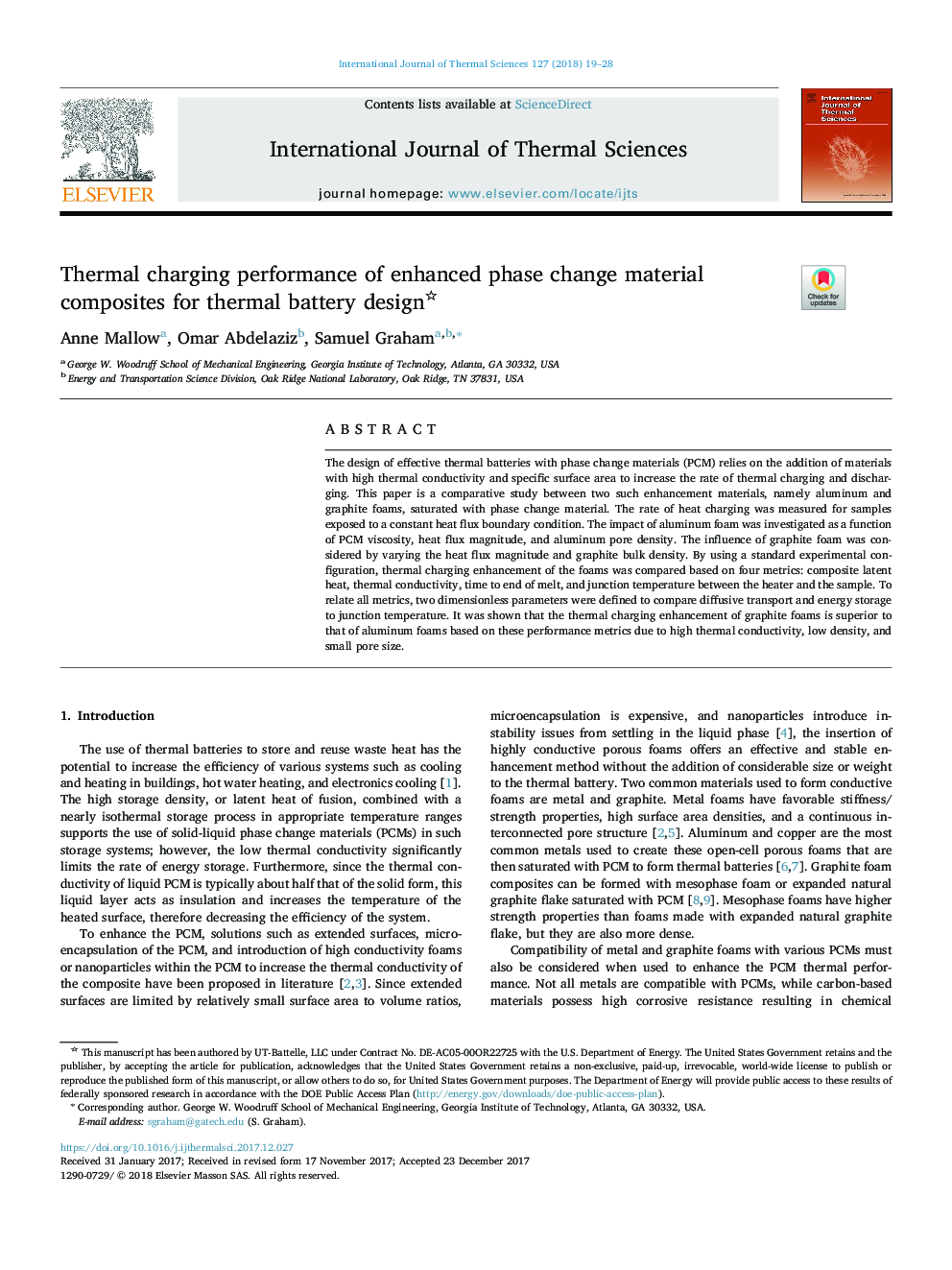| Article ID | Journal | Published Year | Pages | File Type |
|---|---|---|---|---|
| 7060748 | International Journal of Thermal Sciences | 2018 | 10 Pages |
Abstract
The design of effective thermal batteries with phase change materials (PCM) relies on the addition of materials with high thermal conductivity and specific surface area to increase the rate of thermal charging and discharging. This paper is a comparative study between two such enhancement materials, namely aluminum and graphite foams, saturated with phase change material. The rate of heat charging was measured for samples exposed to a constant heat flux boundary condition. The impact of aluminum foam was investigated as a function of PCM viscosity, heat flux magnitude, and aluminum pore density. The influence of graphite foam was considered by varying the heat flux magnitude and graphite bulk density. By using a standard experimental configuration, thermal charging enhancement of the foams was compared based on four metrics: composite latent heat, thermal conductivity, time to end of melt, and junction temperature between the heater and the sample. To relate all metrics, two dimensionless parameters were defined to compare diffusive transport and energy storage to junction temperature. It was shown that the thermal charging enhancement of graphite foams is superior to that of aluminum foams based on these performance metrics due to high thermal conductivity, low density, and small pore size.
Related Topics
Physical Sciences and Engineering
Chemical Engineering
Fluid Flow and Transfer Processes
Authors
Anne Mallow, Omar Abdelaziz, Samuel Graham,
